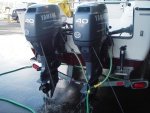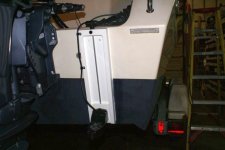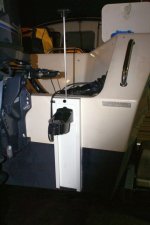NORO LIM
Member
- Joined
- Apr 24, 2008
- Messages
- 893
- Reaction score
- 0
- C Dory Year
- 2006
- C Dory Model
- 23 Venture
- Vessel Name
- NORO LIM (sold 12/12/14)
Thanks for the helpful responses and the generous offer. I think I'm leaning toward giving the sliding mount a try.
Now, as I ponder my winter projects, I find my OCD symmetry affliction urging me to try mounting the transducer between my twin engines, right on the center line of the boat. (Isn't the thought of that visual balance just irresistible?)
OTOH, the sounder has worked great with the transducer where it's been for 7 years, on the starboard side of the transom, and my neurotic attachment to the "If-it-ain't-broke . . ." principle gives me the heebie-jeebies when I contemplate changing anything.
Has anyone with twin engines on a C-Dory or Venture hull tried center mounting their transducer? Dare I do it?
Now, as I ponder my winter projects, I find my OCD symmetry affliction urging me to try mounting the transducer between my twin engines, right on the center line of the boat. (Isn't the thought of that visual balance just irresistible?)
OTOH, the sounder has worked great with the transducer where it's been for 7 years, on the starboard side of the transom, and my neurotic attachment to the "If-it-ain't-broke . . ." principle gives me the heebie-jeebies when I contemplate changing anything.
Has anyone with twin engines on a C-Dory or Venture hull tried center mounting their transducer? Dare I do it?



